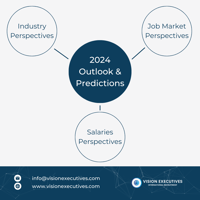Check out James Pickering 's 2024 eyecare outlooks & predictions 👀 Industry Perspectives: Looking...
🏥 𝐏𝐫𝐢𝐯𝐚𝐭𝐞 𝐄𝐪𝐮𝐢𝐭𝐲 𝐚𝐧𝐝 𝐏𝐫𝐚𝐜𝐭𝐢𝐜𝐞 𝐓𝐫𝐚𝐧𝐬𝐢𝐭𝐢𝐨𝐧𝐬 𝐢𝐧 2025: 𝐍𝐚𝐯𝐢𝐠𝐚𝐭𝐢𝐧𝐠 𝐚 𝐒𝐡𝐢𝐟𝐭𝐢𝐧𝐠 𝐋𝐚𝐧𝐝𝐬𝐜𝐚𝐩𝐞 🏥
🌎 As we progress through 2025, the eyecare industry is experiencing a notable shift in private equity (PE) activity. According to Vision Monday, factors such as tariffs and market uncertainties have contributed to a slowdown in U.S. PE deal-making in early 2025 .
👩⚕️ This deceleration is prompting eyecare professionals to re-evaluate their practice transition strategies. While PE investments have previously offered lucrative exit opportunities, the current environment suggests a need for more cautious consideration.
🩺 Practice owners are now exploring alternative models, including partnerships with management services organizations (MSOs) and affiliations with larger healthcare networks. These options can provide operational support while allowing practitioners to maintain a degree of autonomy.
👀 In this evolving landscape, it's crucial for eyecare professionals to stay informed and adaptable. Engaging with financial advisors and industry experts can help navigate these transitions effectively, ensuring both the sustainability of the practice and the continued delivery of quality patient care.

